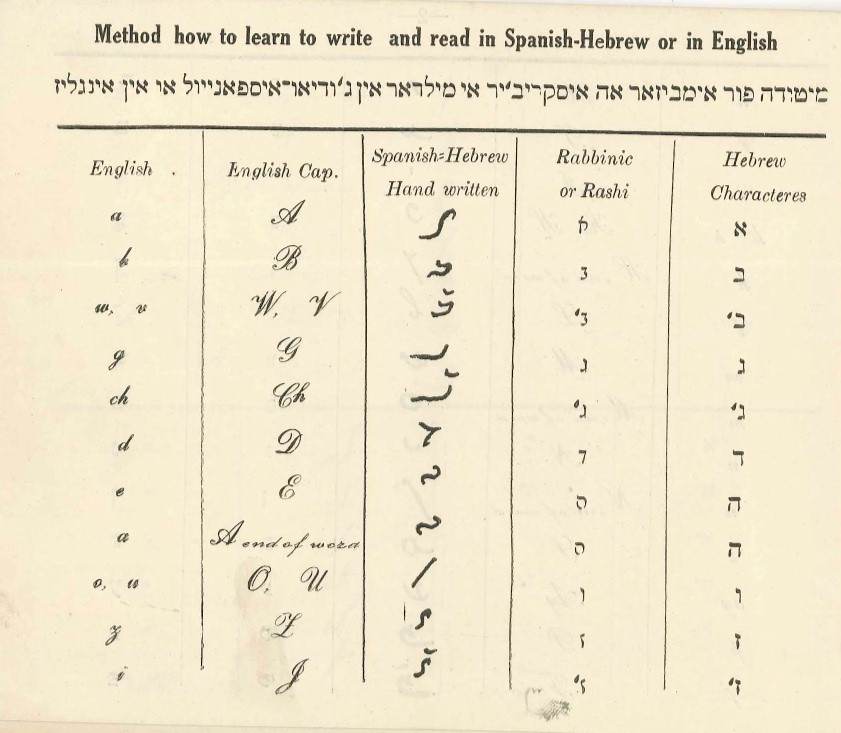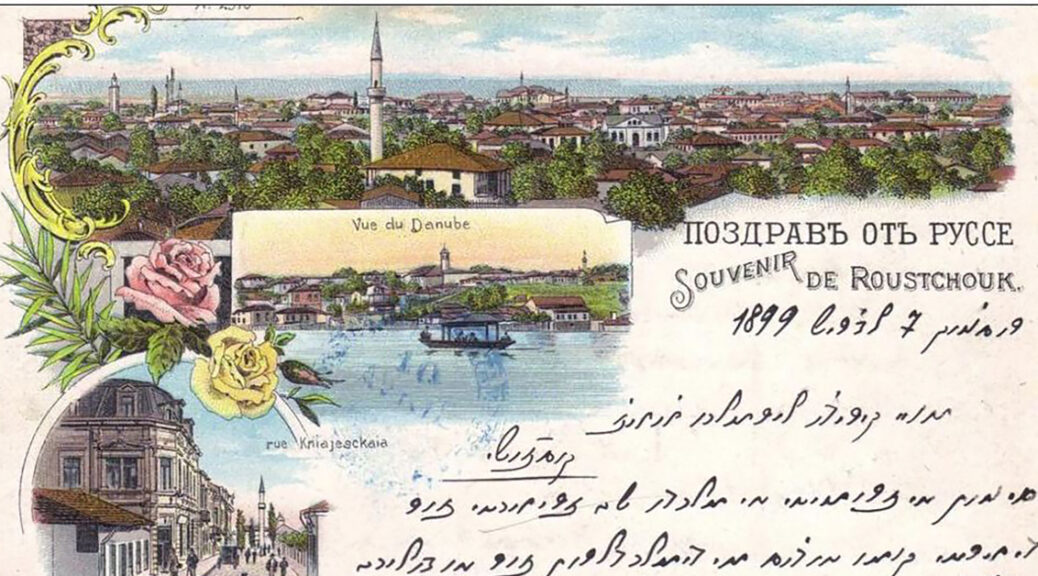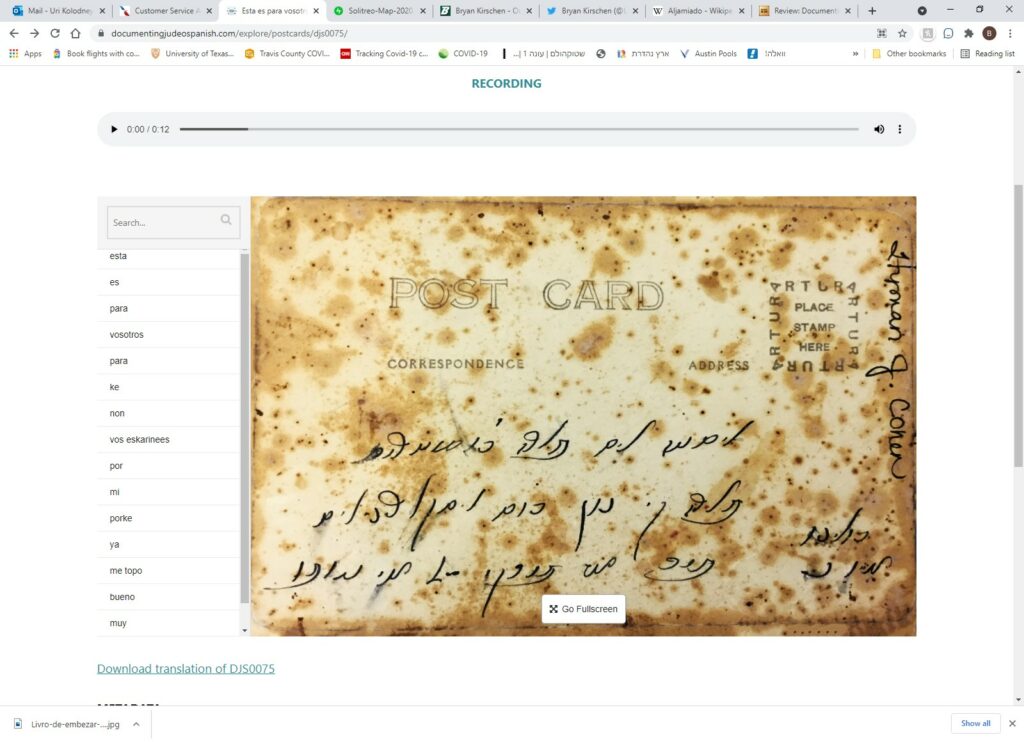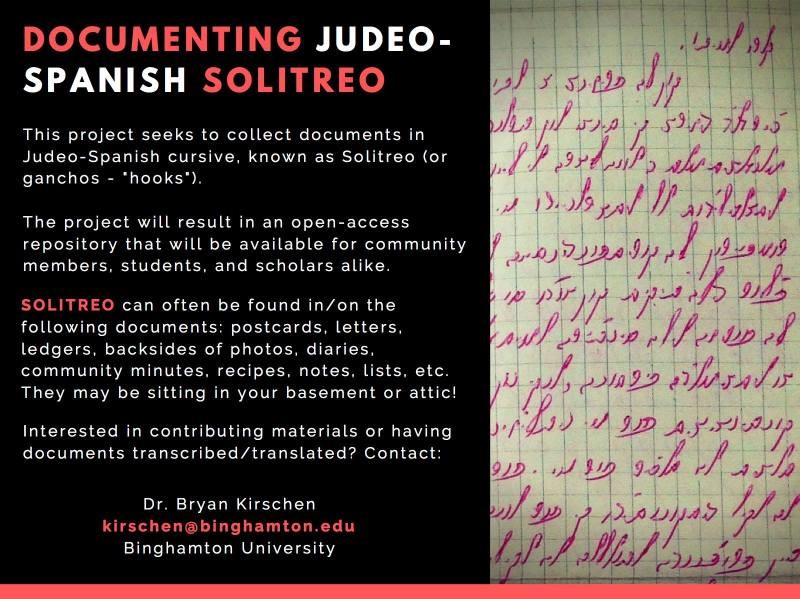Read, hot & digitized: Librarians and the digital scholarship they love — In this series, librarians from UTL’s Arts, Humanities and Global Studies Engagement Team briefly present, explore and critique existing examples of digital scholarship. Our hope is that these monthly reviews will inspire critical reflection of and future creative contributions to the growing fields of digital scholarship.
Documenting Judeo-Spanish was launched in Spring 2020 under the leadership of Dr. Bryan Kirschen, a sociolinguist specializing in Hispanic languages at the Romance languages department at Binghamton University, NY (Twitter @LadinoLinguist).
“Ladino (also known as Judeo-Spanish or Judezmo) refers to the variety of Spanish that developed among Jewish populations who were expelled from Spain in 1492 and subsequently settled throughout Turkey and the Balkans, then of the Ottoman Empire. These Jews, known as Sephardim, preserved many features of Medieval Spanish, while incorporating linguistic elements from the languages spoken in their surroundings. As a Jewish language, Ladino has always been in contact with Hebrew. And while it may sound like other Romance languages, in writing, it would have traditionally appeared more similar to a Semitic language. This project deals with documents in Judeo-Spanish written in Solitreo. Solitreo refers to the Hebrew-based cursive script once used by Sephardim; it is the cursive variety of the Rashi (Rabbinic) script; it derived from Galician/Portuguese, meaning ‘to spell.’[1] This style of writing is distinct from the Ashkenazi-based alphabet used for cursive Hebrew today, making documents in Solitreo undecipherable to the untrained eye. Solitreo is now a nearly-extinct alphabet to an endangered language, as most writers of the language utilize Roman characters.”[2]

“The Solitreo alphabet is presented here under “Spanish-Hebrew Hand written.” In this table, one could see the Rashi and Hebrew characters, as well as the English equivalent.” “Livro de Embezar las Linguas Ingleza i Yudish” (“Book for Learning the English and Yiddish Languages”), published by New York City’s La Amerika newspaper in 1916.
The Documenting Judeo-Spanish project contains a range of documents from journal entries and ledgers, to personal correspondence, prayers, poetry, and community minutes. The project currently presents 25 selected documents (out of 150 already collected from around the world). Beyond these fascinating digitized texts, the most compelling tool is one that allows users to engage with the paleographic endeavor of deciphering the script. Hovering one’s mouse over a word in Solitreo will reveal its Latin-character equivalent form in Judeo-Spanish, while clicking on that word would show a tooltip with the literal translation of the lexical term. Below each digitized object there is also downloadable PDF file, containing the parallel text in Romanization of Judeo-Spanish as well as English translation. Metadata about both the content of the item and its digital file is included as well. Some items include a short recording of the text (in WAV format) being read in Judeo-Spanish. See for example this postcard: https://documentingjudeospanish.com/explore/postcards/djs0075/
Additional tools are expected to be launched soon, including a fully-developed font in Solitreo which would include individual and final forms of letters, ligatures, numbers, punctuation, and diacritical marks.[3]
Kirschen’s project could be used both within and outside of academia. Its audience are educators, students, scholars, and the public. While it could be used as a pedagogical tool, introducing students to an extinct script, it could also be used by the community, allowing users to learn how to read personal items and re-connect to their heritage. What I really like about this project is that all 150 items that were processed for it were gathered from the public. As opposed to other projects that use existing collections, Documenting Judeo-Spanish is serving like an ‘aid force,’ connecting the academia with the community.
Related resources (with annotations):
Aki Yerushalayim : revista de las emisiones de Israel en djudeo-espaniol. Jerusalem: s.n., 1979.
The UT Libraries hold a full run of this Ladino language journal, published in print 1979 to 2016 and resumed publication in digital in 2019. Many of its issues include a section dedicated to Solitreo and its transcription. See UTL catalog. Some issues are also available online.
Barocas, David N. A Study on the Meaning of Ladino, Judezmo, and the Spanish Jewish Dialect / by David N. Barocas ; with an Introductory Essay by Henry V. Besso on Judaeo-Spanish, Its Growth and Decline. New York: Foundation for the Advancement of Sephardic Studies and Culture, 1976. (see UTL catalog).
Bunis, D. A guide to reading and writing Judezmo. Brooklyn, N.Y.: The Judezmo Society, 1975. Downloadable from the author’s academia.edu page.
Bunis, D. Soletreo: Writing the Ladino Script with Prof. David Bunis. Stroum Center for Jewish Studies. University of Washington, 2015. In this video, Professor Bunis reviews and illustrates how to write each letter of Ladino in both the Rashi and Solitreo alphabets.
[1] For many Sephardim, Solitreo was simply known as ganchos, meaning ‘hooks,’ due to the ligatures that form between letters (https://documentingjudeospanish.com/solitreo/)
[2] Kirschen, Bryan. “Our Project.” Documenting Judeo-Spanish, 2020, www.documentingjudeospanish.com/project.



